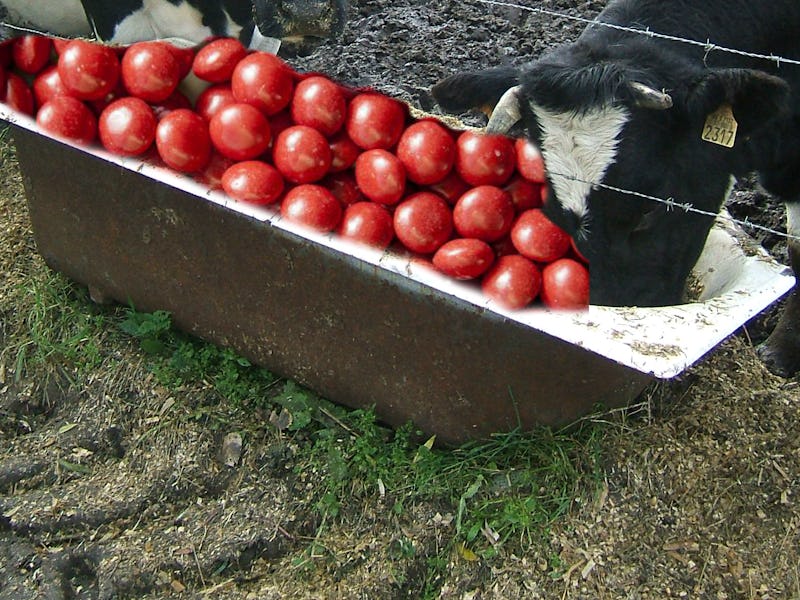It was strange enough that thousands of unmarked red Skittles spilled onto a rural Wisconsin highway on Friday. Weirder still was the fact that they were bound for a cow farm. But the most bizarre revelation of the Great Skittle Spill of 2017 is the fact that the candies have been routinely fed to cattle for years — and that the implications of doing so are minimal.
While it is certainly alarming to imagine a barn full of cows chowing down on fruity red pellets, the practice seems less odd when you consider what that candy actually is on a molecular level. Made mostly of high-calorie corn syrup, Skittles are, as one former farmer reported to WBAY, “cheap carbs.” This is why candy manufacturers such as Mars, which produces Skittles, have been known to sell defective candy to factories that process the sweets into calorie-dense animal feed.
To fatten up their livestock quickly and efficiently, farmers normally feed their animals corn-based meal, which is a major source of carbohydrates. The sugar that makes up Skittles are simply carbohydrates in a different form — and, as University of Tennessee animal nutritionist John Waller, Ph.D., explained to Live Science in 2012, it doesn’t really matter where a cow’s carbs come from; all that matters is that it gets them in the right quantities, together with other necessary nutrients. “Ruminant animals are very good at utilizing a wide variety of feedstuffs, because the microbes in the rumen can digest things that other animals can’t utilize,” he said, pointing out that it’s actually a pretty clever — not to mention environmentally friendly — way of getting rid of food that would otherwise wind up in a landfill.
What’s concerning about the GSS 2017, however, is that the Skittles were produced at a plant that doesn’t normally sell its rejects for feed. According to Mars spokesperson Denise Young, a power outage led to the Skittles being produced without their signature “S,” which is why they were deemed unfit for consumers. Currently, the company is investigating why this particular batch, which escaped from a wet box on the truck it was being transported on, was bound for the cattle farm.
If the thought of eating beef cut from a candy-fed cow still concerns you, consider the other waste products that cattle have been fed over the years: In Texas, cows are routinely fed citrus rinds and other byproducts, and used-up mash from beer brewers has also been used as feed. In light of these alternatives, feeding cows chewy strawberry-flavored candy simply seems kind of sweet.
